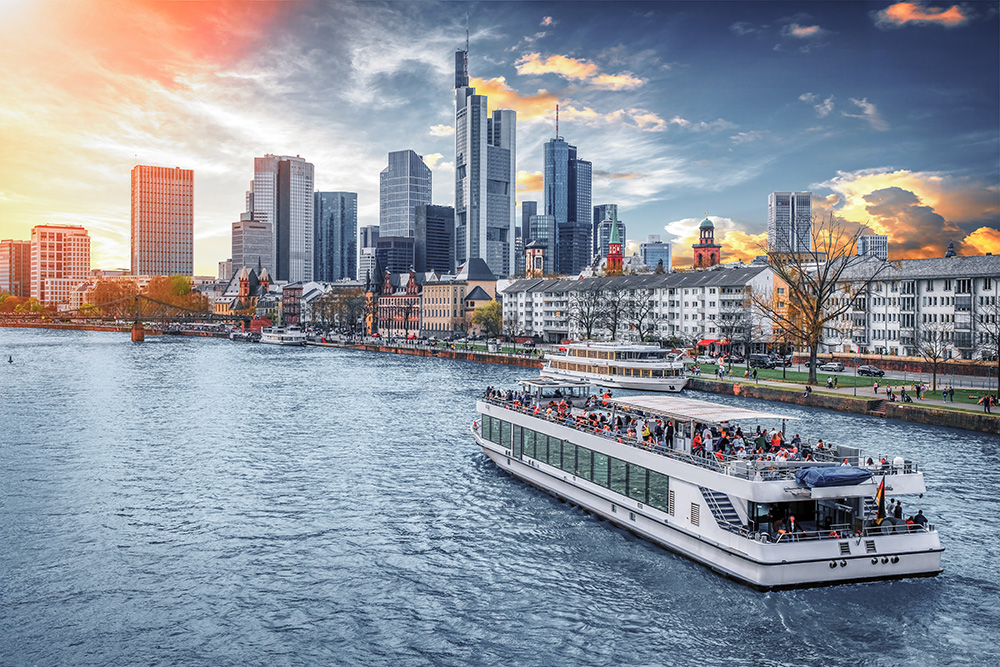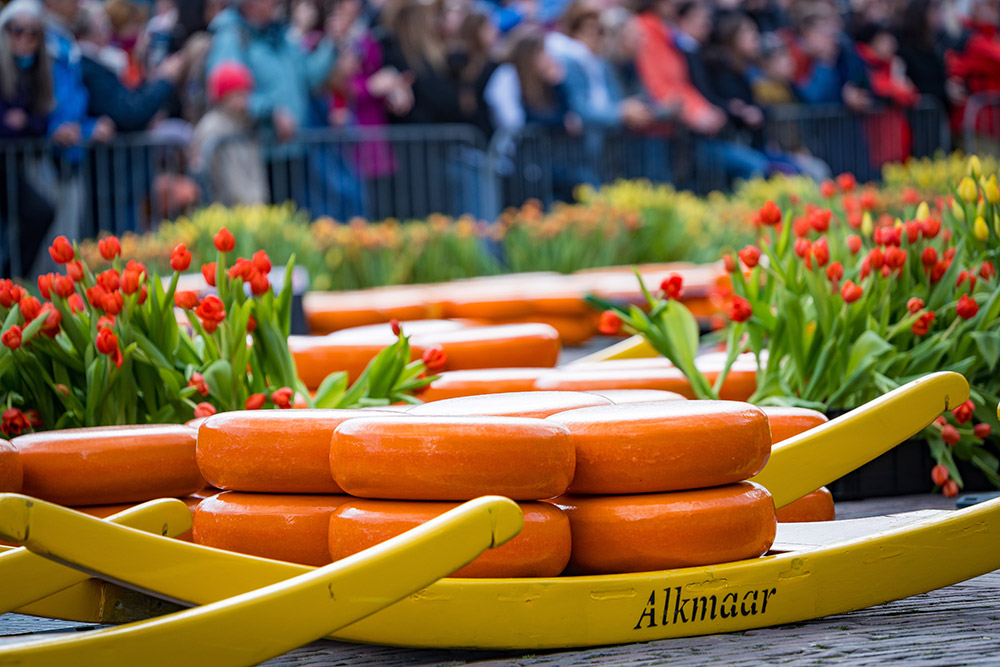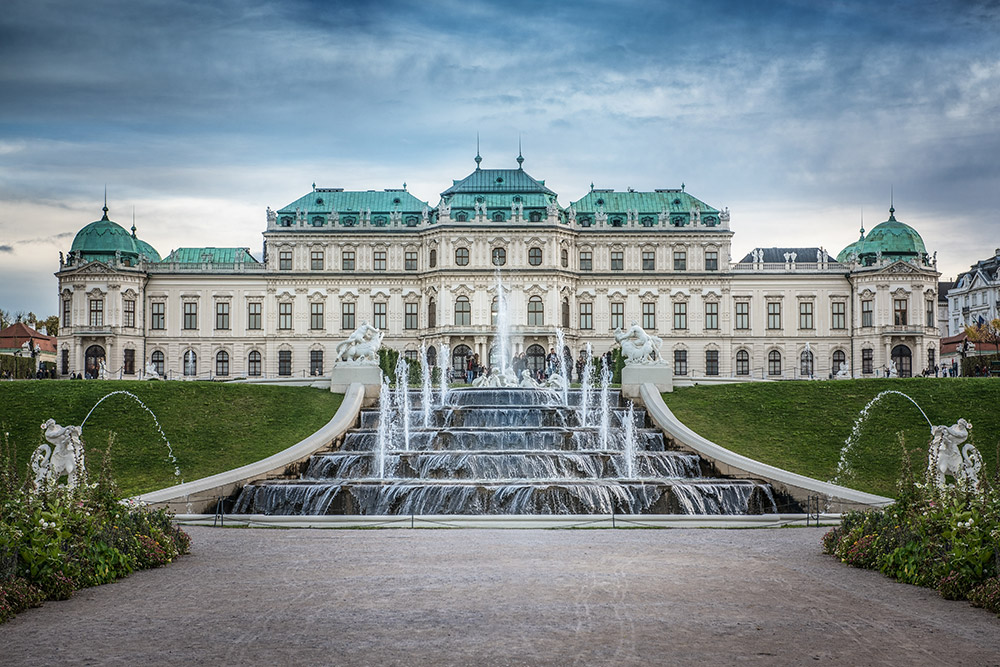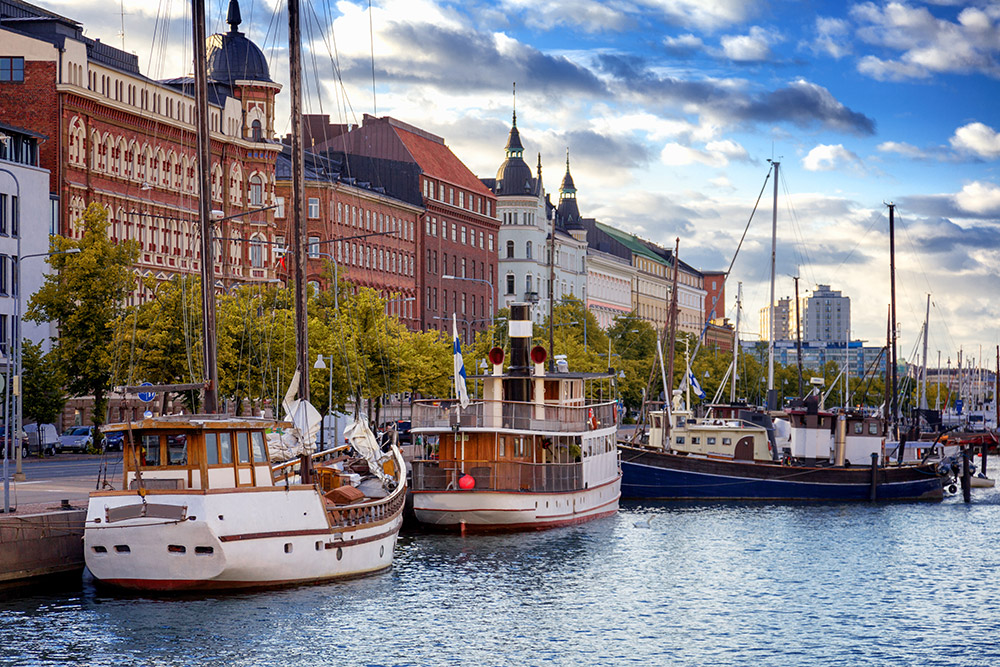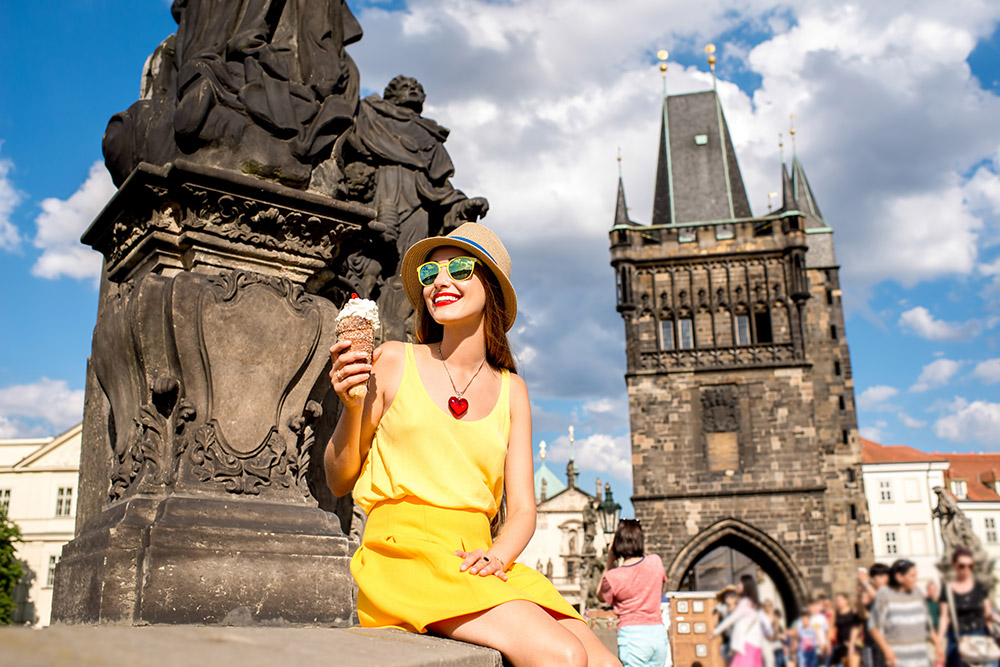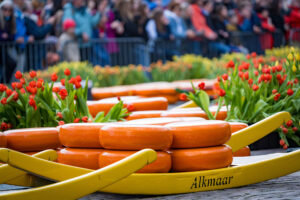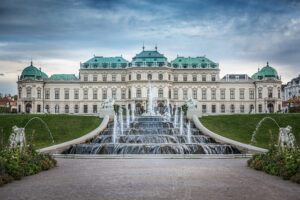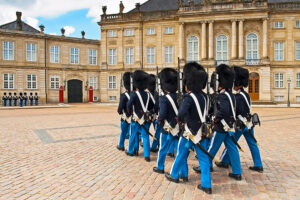Embark on a culinary voyage along the Main and Danube Rivers, exploring the rich culinary mosaic of Germany and Austria. The city of Frankfurt is a culinary paradise, featuring Ebbelwoi, the local cider, and Handkäse mit Musik, a regional cheese delicacy. The picturesque town of Wertheim, situated at the confluence of the Main and Tauber Rivers, welcomes visitors with Wertheimer Weißburgunder, a local white wine, and the opportunity to savor Swabian-style Maultaschen.
Popular itinerary for Main & Danube nature tour:
Würzburg, located in the heart of the Franconian wine region, tempts visitors with the flavors of local sausages, such as Bratwurst Würzburger, paired with Silvaner wine. The charming town of Zeil am Main, characterized by vineyard-covered hills, beckons visitors to savor the local Zwickelbier amidst breathtaking views. Bamberg is renowned for its smoked beer, Rauchbier, as well as traditional dishes like Bamberger Hörnla potato dumplings.
The charming city of Nuremberg boasts the iconic Drei im Weggla sausages (3 sausages in a bun) and the renowned Lebkuchen gingerbread. Regensburg, along the Danube, entices with Regensburger Wurstsalat and a taste of Bavarian cuisine. The majestic Walhalla temple, with its panoramic views, provides a regal setting for culinary delights.
Heading to Passau, where Bavarian and Austrian influences blend, you’ll find the ideal location for exploring wine and cuisine. Linz invites visitors to pair excellent coffee with an array of Linzer Torte cookies. Departing from the Danube, proceed to Salzburg and savor the iconic Salzburger Nockerl dessert and the renowned Mozartkugeln chocolates.
This suggested itinerary begins in Frankfurt and concludes at Munich Airport, covering a distance of approximately 745 miles.
Day 1: Frankfurt Am Main
From Frankfurt Airport, a 10-mile drive on Route 43B will take you to the heart of Frankfurt Am Main, Germany’s financial center, located on the River Main. The Frankfurt Stock Exchange, founded in 1585, is surrounded by skyscrapers, earning the city the nickname “Mainhattan.” The compact and historic city center is easily explored on foot.
Start your journey at the train station. For those with cars, it’s recommended to park in the station area and avoid entering the center of the city, marked by a green zoned belt along the historic walls. Stroll along Kaiserstrasse or its parallel streets towards the skyline of skyscrapers. At the Main Tower on Neue MainzerStrasse 52, there’s an opportunity to climb to the tower’s roof for a spectacular view of the city and its surroundings.
Continue towards the home of the poet, writer, and playwright, Johann Wolfgang von Goethe, located at Grosser Hirschgraben 21. Goethe’s house hosts the German Romantic Museum with a permanent exhibition on Goethe’s life. From Goethe’s house to the city square is a short distance. Following Berliner Strasse, you’ll reach the round-shaped Protestant church, Paulskirche, known for its architectural design. A plaque on the outer wall commemorates the 1963 visit of U.S. President J.F. Kennedy when he declared, “Ich bin ein Berliner.”
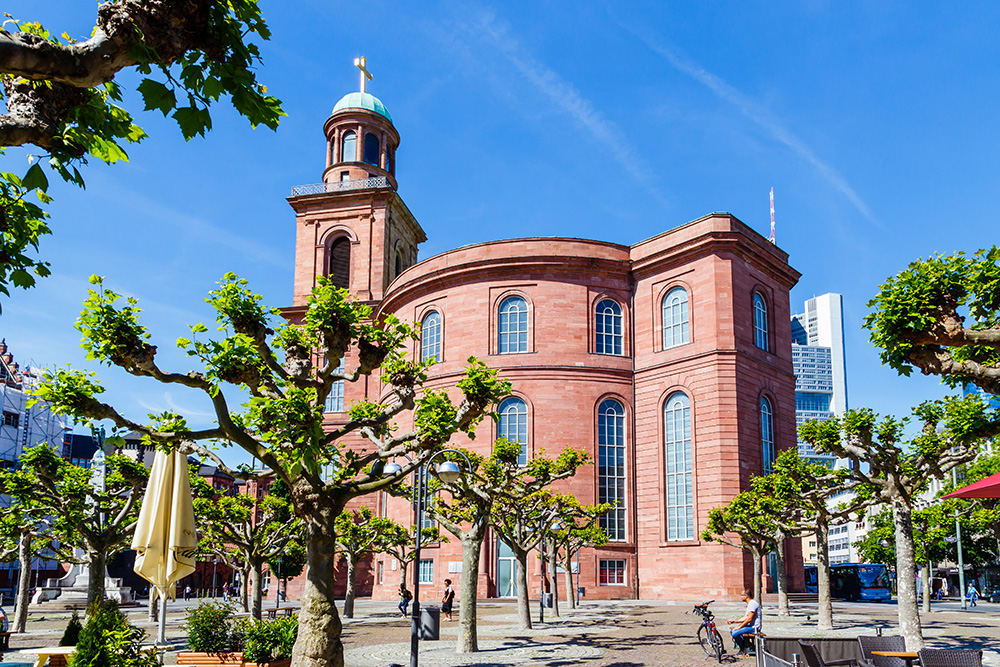
A slight detour from the church leads to the heart of the old town and Romer, the city hall. Romer dominates Romerberg Square with its neo-Gothic façade, and its baroque balcony adorned with four emperor statues dates back to the early 15th century. Leaving the square, navigate through narrow alleys toward the Dom Cathedral. The cathedral’s interior is impressive, and a visit to the Icon Museum (Ikonenmuseum), featuring an extensive and high-quality collection of religious icons, is highly recommended.
End the day by strolling through the shopping district near the old town or along Zeil Street, exploring a wide selection of boutiques, shops, restaurants, and cafes.
Spend the night in Frankfurt.
Day 2: From Frankfurt through Miltenberg to Wertheim to Würzburg
Travel on Highways 3 and 469, covering approximately 46 miles, to the city of Miltenberg. This medieval town served as an important trading center during the Middle Ages and was also a hub for the production of fabrics and textiles. Today, it is a charming and picturesque destination attracting visitors from around the world.
The tour begins at the Alte Mainbrücke, a 14th century stone bridge – one of Germany’s oldest. Continuing from the bridge, you’ll reach the central market square, Marktplatz, surrounded by historic buildings and charming shops. The beautiful city center is graced by St. Jacob’s Church, with its famous organ that has captivated audiences for over 500 years, as well as well-preserved 15th and 16th-century timber-framed houses. Overlooking the town stands the 13th-century Miltenberg Castle, now a museum and cultural hub hosting exhibitions and events throughout the year.
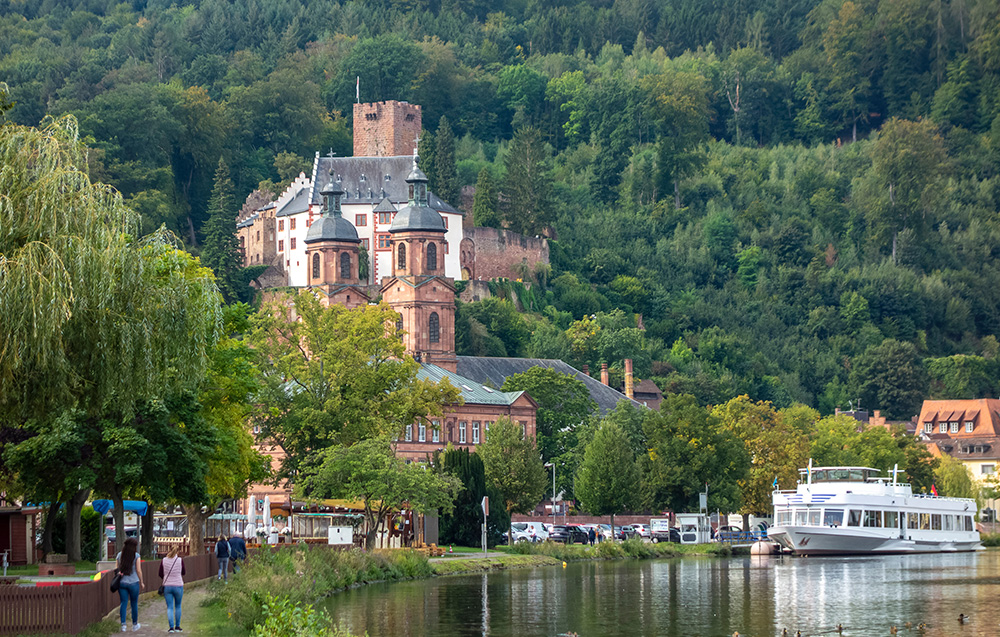
Miltenberg is celebrated for its traditional German cuisine, offering numerous outstanding restaurants, cafes, and beer gardens where you can savor local specialties and relish delightful meals. Some culinary delights to try in Miltenberg include Weißwurst, a traditional Bavarian sausage made from veal and spices, usually served with sweet mustard and a soft pretzel, and Schweinshaxe, crispy roasted pork knuckle, with a crunchy exterior and juicy interior.
The Beer Garden, located in a picturesque park along the Main River, is a popular spot and a great place to enjoy cold beer or traditional German cuisine during the summer months.
From Miltenberg, travel on Route 508L to the town of Wertheim, founded between the 7th and 8th centuries on the right bank of the Main River. In the early 12th century, the Rothenburg family built a castle on the left bank of the Main. The castle is known for its well-preserved Gothic chapel, one of the oldest in Germany, and a Renaissance style palace –both open to visitors. The castle also houses a museum showcasing the town’s history. The historic market square, surrounded by beautifully preserved half-timbered buildings, hosts a culinary market every Saturday morning, featuring local delights.
From Wertheim, take Route 3 for approximately 27 miles until you reach Würzburg to spend the night.
Day 3: Würzburg
Begin your tour at the stone bridge, reconstructed multiple times since the 12th century, and now open exclusively for pedestrians. Adorned with 12 statues of holy kings on both sides, pass through it to reach the Town Hall. This Romanesque-style building features a pointed tower with a clock and sundial. The building’s exterior includes a Renaissance-style balcony. The Town Hall’s grand entrance is made of striking red sandstone. Nearby is the 18th-century Baroque fountain, Vierohrenbrunnen, depicting four dolphins symbolizing wisdom, justice, patience, and strength. From there, head to the central market square, Marktplatz, home to the Obelisk Fountain adorned with figurative reliefs. The square currently hosts an active market, and on its cornerstone sits the Marienkapelle church, inaugurated in 1377. This church is considered one of the most beautiful in the region, filled with numerous artistic treasures displayed in its well-lit interior.
The city’s main thoroughfare leads to the entrance of the Gothic-style Wurzburgerdom Cathedral. The cathedral’s interior is adorned with artistic elements, and its expansive windows illuminate the white space, contrasting with the warm shale floor. The Residenz Palace, a UNESCO World Heritage Site, was constructed in the early 18th century in Baroque style and served as the prince’s residence. The palace gardens, designed in the late 17th century by garden artist Johann Prokop Mayer, are a masterpiece on their own.
Perched on a high hill adorned with vineyards, Festung Marienberg, the Marienberg Fortress, commands panoramic views over the surroundings. Its origins trace back to an 8th-century church, later evolving into a fortress with a 328-foot-deep well that ensured a constant water supply. The fortress houses the Franconian Museum of Art and Cultural History, along with the Bibra Apartment showcasing distinctive furnishings and wall carpets. The well-kept Princes’ Garden provides a delightful setting for a leisurely stroll and relaxation. Access to the fortress is available by foot, by cable car, bus, or taxi.
The Würzburger Weindorf, an annual wine festival showcasing local red wines from the Franconia region, takes place in the city from late May to early June.
Spend the night in Wurzburg.
Day 4: From Würzburg through Bamberg to Nuremberg
Follow routes 7 and 70 for approximately 59 miles until you arrive in Bamberg. Recognized as a UNESCO World Heritage site, Bamberg’s Old Town is celebrated for its medieval architecture and meticulously preserved historic structures. The recommended first stop is the Altes Rathaus, or Old Town Hall, adorned with captivating wall paintings. Erected in the 16th century, this iconic Renaissance-style building stands on a small island in the Regnitz River, accessible via a bridge, and it served as the city hall for numerous centuries.
A short ascent leads to the Alte Hofhaltung, or Old Court, once the residence of the prince-bishops of Bamberg. Admire its splendid Gothic architecture, characterized by tall, narrow windows and intricately carved stone elements. The building features an inner courtyard as well. The Bamberg Cathedral is a remarkable example of Romanesque architecture, originating from the 11th and 12th centuries. It houses notable graves, sacred artifacts, stone-carved sculptures, murals, and stained glass windows. The cathedral is surrounded by three impressive buildings that document over a thousand years of the city’s history.
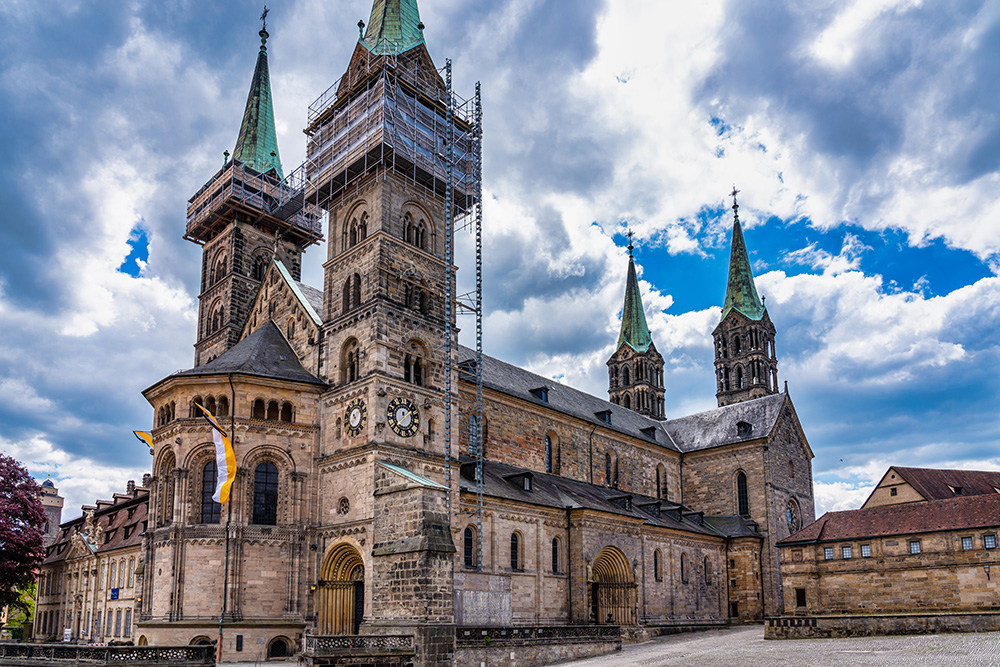
Returning to the Old Town, we’ll explore “Little Venice,” a charming ensemble of buildings lining the Regnitz River banks, and one of the city’s most popular tourist destinations. Bamberg’s traditional breweries are renowned, and there are tours available to learn about the brewing process and to sample some of the local offerings.
Continuing your journey, travel on Road 73 for 40 miles to reach Nuremberg. The road runs parallel to the Main-Danube Canal, connecting the Main River with the Danube River.
Spend the night in Nuremberg.
Day 5: Nuremberg
Nuremberg stands out as one of Germany’s most captivating cities. Surrounded by a green belt and the Pegnitz River, it boasts a diverse array of structures, courtyards, churches, and fortresses. A majestic castle graces the skyline, harmonizing with remarkable museums, squares, fountains, and vibrant shopping and leisure districts. Amidst this, poignant historical sites unfold, revealing Nuremberg’s somber chapters: the Nazi Party Rally Grounds and the courthouse that hosted the Nuremberg Trials from 1945 to 1949.
The tour begins at the Kaiserburg Nuremberg, an impressive fortress that dates back to the Holy Roman Empire, where imperial assemblies were held since 1356. The central round tower, Sinwell Tower, built nearly 700 years ago, offers a fantastic panoramic view of the city. The deep well attests to the builders’ prowess. The Kemenate, part of the castle museum and an extension of the German National Museum, displays archaeological finds, weapon collections, armor, and artworks, offering insights into the site’s rich history.
Descending into the city, the next stop is the residence of Albrecht Dürer, a German Renaissance polymath. His impressive half-timbered house, now a museum, showcases his life, works, and tools, standing as one of Nuremberg’s few surviving structures from its golden age. Fraukirche, a 14th-century Gothic-Renaissance church, graces the square with its multi-peaked gable and an artistic clock from 1509. Facing the central square, it hosts periodic markets and features the Schöner Brunnen fountain, a late 14th century Gothic spire adorned with water-spouting figures, standing tall at about 65 feet.
The Documentation Centre of the Nazi Party Rally Grounds documents events and rallies that took place in the city, which served as a central hub for the Nazi Party. The Congress Hall, which stands uncompleted, was intended to hold 80,000 seats.
For beer enthusiasts, the local Altstadthof beer is highly recommended, brewed in the maze of the Historic Rock-Cut Cellars at the castle’s base. Nuremberg’s beer industry has a rich tradition dating back to the 14th century, with the city boasting 30,000 residents and around 40 breweries. To complement the local beer, savor Nuremberg’s traditional sausages, the Nürnberger Rostbratwurst, whose recipe dates back to the 14th century, making it as a beloved local delicacy.
Spend the night in Nuremberg.
Day 6: From Nuremberg through Regensburg, via Walhalla, to Passau
This morning, travel on Highway 3 for approximately 74 miles to Regensburg, a city situated on a bend of the Danube River where it meets the Naab River. Regensburg boasts well-preserved medieval buildings and sites that have endured over the centuries. This charming and tranquil city offers a wide range of attractions and activities, including museums, historical sites, and delicious food and drinks.
Start your tour at the Alte Steineren Brucke, an ancient stone bridge known as a medieval engineering marvel. This bridge, with a history dating back almost 900 years, was once the only connection between the banks of the Danube, linking Vienna and Ulm.
St. Peter’s Cathedral (St. Peter Dom) is a masterpiece of Gothic architecture from the 13th century. The cathedral, visible from a distance, features impressive nave and transept halls, a decorated choir, and colorful 13th and 14th-century stained glass windows.
The Altes Rathaus, or Old Town Hall, was built in 1245 following Emperor Frederick II declaration of the city as an imperial free city. It served as an important meeting point for the leadership of the Holy Roman Empire. This three-winged structure underwent reconstruction after a fire, and its museum now features an exhibit on medieval torture instruments.
Haidplatz Square showcases the city’s beautiful architecture, with well-preserved medieval buildings adorning the picturesque square. Notable establishments in the area include the Zum Goldenen Kreuz restaurant, a favorite of Emperor Charles V, and the neo-classical Tom Dittmer Palais, owned by a prosperous merchant family.
Regensburg is also famous for its sausages, the Regensburger, made from a mixture of pork and beef, seasoned with a variety of spices. They are often served with sauerkraut and potatoes.
We’ll continue from Regensburg approximately 7 miles to the Walhalla Temple. Nestled on the slopes of a hill, this grand structure, inaugurated by King Ludwig I in 1842, is influenced by the Parthenon in Athens. Along the interior walls are busts and memorial plaques of the ‘Valhalla Companions,’ chosen by Ludwig I and considered exemplary figures of Germany. The friezes above them depict an idealized history of the German people, from the earliest migrants to early medieval Christianity. The view of the Danube from here is breathtaking.
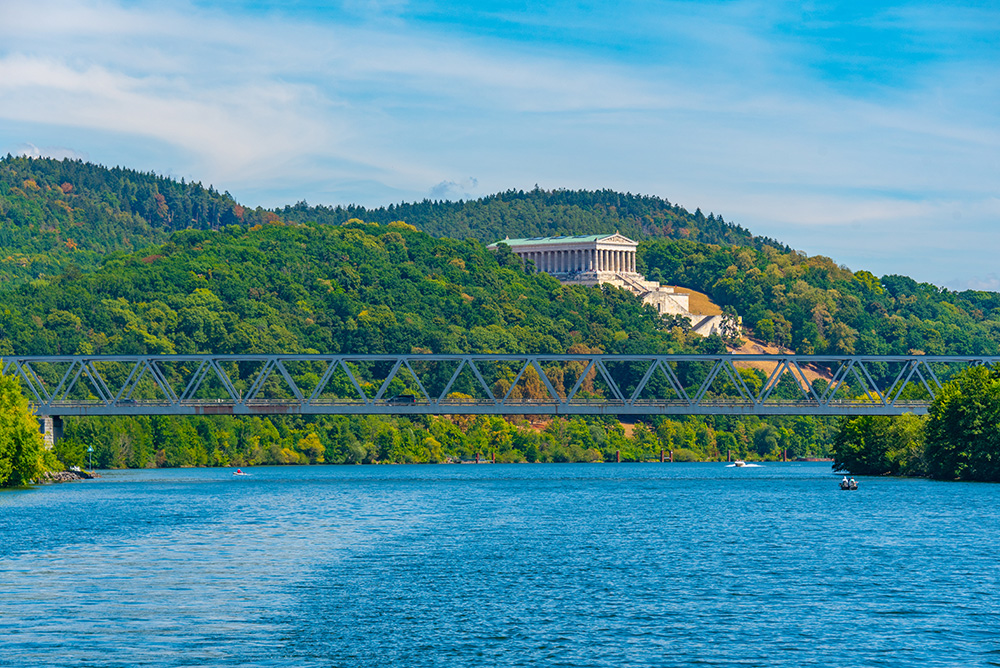
From the Walhalla Temple, return to Highway 3 and travel about 74.5 miles to the city of Passau.
Spend the night in Passau.
Day 7: Passau – Linz
Nestled at the meeting point of three rivers— the Danube, the Inn, and the Ilz— Passau boasts a captivating display of distinct water colors as these rivers converge. The old town, characterized by a maze of narrow winding streets and charming squares, is surrounded by medieval and baroque architecture.
The first stop is the remarkable St. Stephen’s Cathedral, a Baroque masterpiece erected in the 17th century. This cathedral, among the largest in Germany, is renowned for its monumental organ boasting 17,774 pipes, considered one of the largest organs in the world. A Baroque art masterpiece adorns the ceiling above the choir, depicting the martyrdom of St. Stephen.
Passau’s Old Town Hall, a historic landmark in Germany, showcases stunning Baroque architecture. Marked by a prominent facade, embellished sculptures, and a central clock tower providing panoramic views of the picturesque surroundings, this building has a rich history. Over the centuries, it served as the city hall as well as a prison, courtroom, and military facility.
The Glass Museum is dedicated to the history and art of glassmaking. Housed in a historic building that once served as a glassblowing workshop, the museum showcases a collection of glass objects from various periods and styles, including medieval stained glass windows.
Perched above the city on the opposite bank lies the medieval fortress Veste Oberhaus. Built originally as a 13th century defensive fortress, it was later used as a residence for Passau’s bishops and then as a prison. Today, it is a local history museum that offers panoramic views of Passau and the surrounding countryside, along with exhibitions on the fortress and the city’s history.
After exploring Passau, head towards the city of Linz, approximately 62 miles away, on Highway 8A. Linz, the third-largest city in Austria, is primarily known for its industrial character, yet its historic center possesses a distinctive charm. Its sites are centered around a main street, approximately 1 miles long, traversed by the Nibelungen Brucke Bridge and leading to the theater near the train station. Near the bridge is the impressive central square, with the Trinity Column in its center, a Baroque-style monument erected in 1716 in gratitude for the city’s survival of the plague. At the top of the Feichtinger-Haus, 19 bells play snippets of music by Austrian composers three times a day.
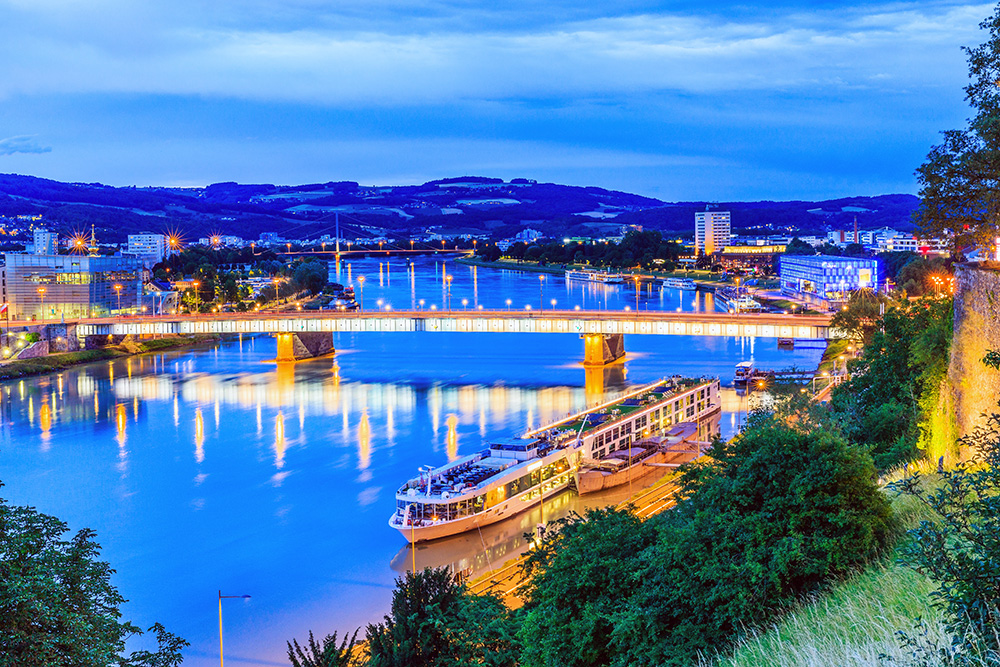
The Old Cathedral of Linz, built in the 17th century in Baroque style, contains impressive elements such as the altar, pulpit, and the massive organ. Climbing the bell tower to about 213 feet, you’ll find breathtaking panoramic views of the city. Evening concerts and music events are held regularly in the cathedral throughout the year.
Mozart stayed in Linz and composed the Linz Symphony during his stay. A memorial statue dedicated to him can be found near the residence on Altstadt Street, close to the central square. Press the button to hear the Linz Symphony.
For shopping enthusiasts, Landstrasse Street is a bustling attraction boasting three shopping malls and various brand stores. Overlooking the city from the northern side of the Danube on Pöstlingberg hill is the Pöstlingberg Church, offering a magnificent panoramic view. The historic Pöstlingbergbahn tram, operating at 30-second intervals, takes you to the central square.
Be sure to sample the local specialty, Linzer Torte. This flat cake has strips of dough on top, and it is filled with nuts or almonds and a thin layer of cherry or forest fruit jam. Another sweet delicacy is Linzer cookies, known as “Linzer Augen,” available in round, square, or star-shaped varieties, each containing a delightful jam filling.
Spend the night in Linz.
Day 8: Linz – Melk – Linz
Today’s journey will be to the town of Melk, a drive of approximately 62 miles from Linz on Highway 1A.
The first stop is the parking lot of Melk Abbey, a Benedictine monastery founded in 1089 by Leopold II, Margrave of Austria. The abbey, an imposing Baroque-style structure overlooking the Danube River, quickly became one of the most important cultural and educational centers in the region. The only way to explore the abbey and its treasures is by taking a guided tour. The tour includes the abbey’s impressive chambers, adorned with wall and ceiling paintings, and the ancient library, housing over 90,000 volumes, many from the medieval period.
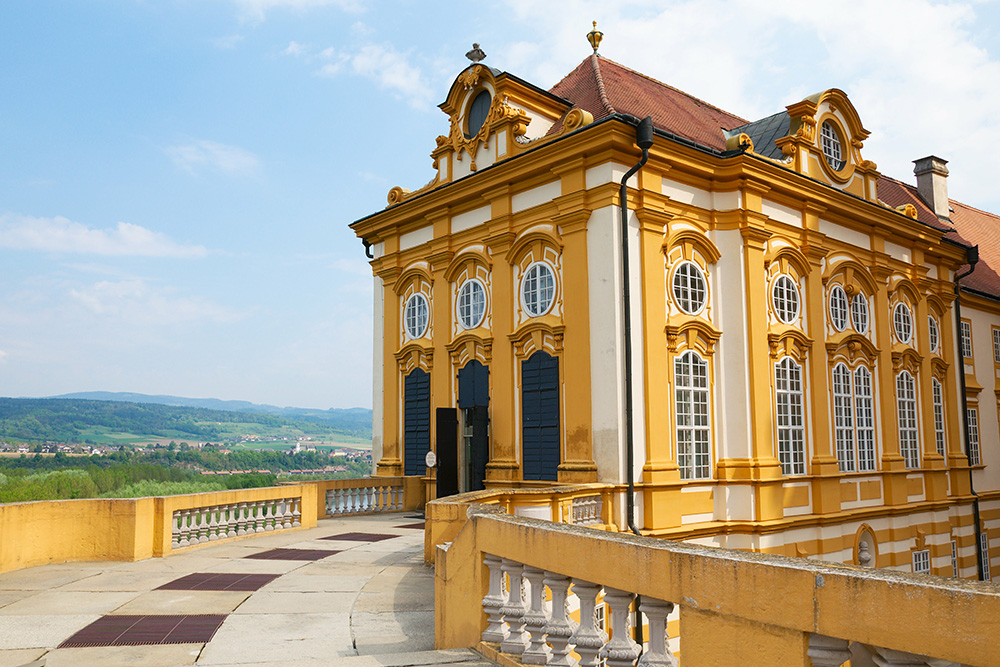
In the 18th and 19th centuries, the monastery played a significant role in Austria’s cultural and intellectual life, hosting prominent figures such as Goethe, Mozart, and Haydn. Today, the abbey is a UNESCO World Heritage site and welcomes visitors throughout the year.
After the monastery visit, stroll through the lively town where you’ll find bustling shops, cafes, and restaurants.
Drive approximately 62 miles back to Linz via Highway 1A.
Spend the night in Linz.
Day 9: Linz – Salzburg via Highway 1A
Departing Linz, drive approximately 81 miles to Salzburg, a city-state located at the foot of the Alps and steeped in a rich ecclesiastical history. Tracing its origins back to the Holy Roman Empire, Salzburg’s history is meticulously preserved. The cityscape is characterized by spires and domes, adorned with narrow alleys and diverse markets. The architectural influence of the Baroque style is prominently showcased, drawing inspiration from Italy.
In January 1756, the renowned composer Wolfgang Amadeus Mozart was born in this charming city, and, undoubtedly, the breathtaking landscape influenced his early musical compositions.
Visit the Salzburg Cathedral, where the interior boasts an elaborate Baroque style bordering on Rococo. Marvel at the impressive vaults, intricately detailed altar, and corner organs. Despite the adorned canopies and the complexity of the organ units, the cathedral exudes a feeling of lightness. The whitewashed walls contribute to an airy and “breathable” atmosphere, allowing for an enjoyable experience.
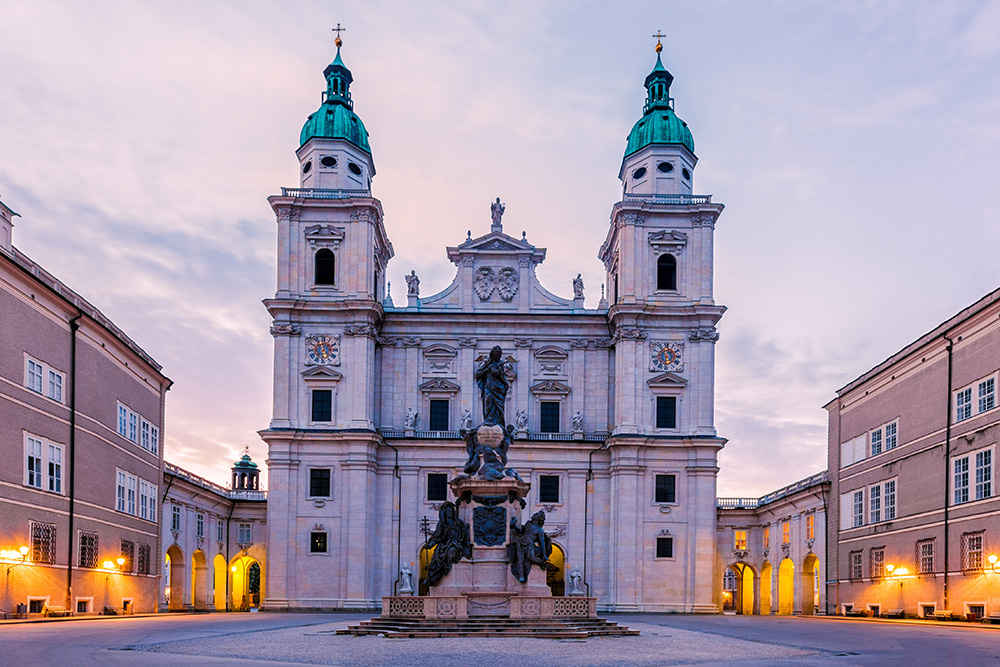
Adjacent to it is the DomQuartier Museum, a must-visit for Baroque enthusiasts, showcasing decorative art from the 17th and 18th centuries, from stucco decorations to furniture, chandeliers, as well as paintings and sculptures.
Hohensalzburg Castle, perched on a hill overlooking Salzburg, has dominated the city for over 1000 years. The castle was expanded over the centuries and its walls were fortified, providing complete defense for both the fortress and its occupants. Today, it serves as the Museum of Archbishops and offers a breathtaking panoramic view of the city and the Alpine landscapes. Access to the castle is possible by foot or funicular.
While in Salzburg, be sure the sample Apfelstrudel, the traditional Austrian dessert, garnished with powdered sugar and accompanied by a side of vanilla sauce or vanilla ice cream.
Spend the night in Salzburg.
Day 10: Salzburg – Munich via Highway 8A
Conclude your Salzburg visit in the morning, then head towards Munich Airport, located approximately 93 miles away.


